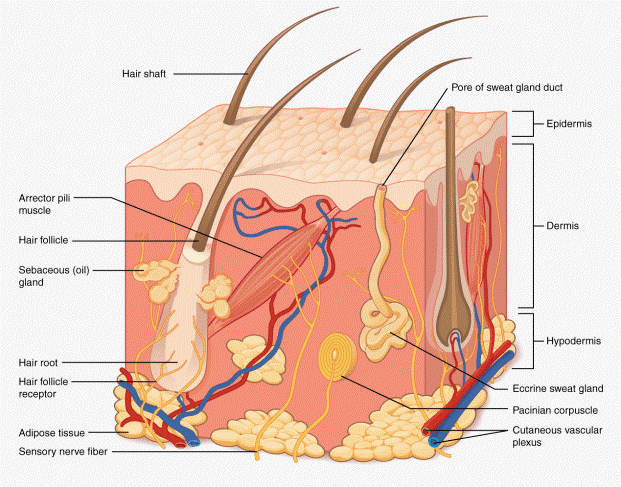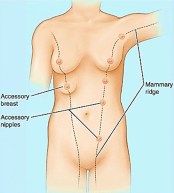
They say that only one-third of Americans believe in Evolution, and two-thirds believe in Creationism, just the reverse of Europeans. So if you do not want to burn in hell, stop reading right now because you risk damnation.
Why do I believe in Evolution, and gamble on spending the rest of eternity surrounded by fire and brimstone? I can’t ignore what I see that is so obviously obvious. If you don’t see the resemblance, you must be blind-sighted or seriously brain laundered. But I will nevertheless forgive you. There are plenty of very smart people that missed it too. Charles Darwin and Alfred Wallace stumbled upon Evolution just a bit over a hundred years ago, almost simultaneously.
What about Aristotle 2400 years ago? He founded logical thinking and was an observer of plants and animals. He even classified 500 species of animals and arranged them in order, suggestive of evolution with man at the top. Very close, but not the whole enchilada. He is considered to be one of the smarter humans that ever walked on earth, but he did not come up with the rather obvious resemblance of monkey to man.
Archimedes, a math whiz with lots of bright ideas, whose comprehension was on an intellectual plane much more sophisticated than what Darwin had. Aristarchus of Samos who figured out the sun was just another star that was the center of our solar system long before Copernicus and Galileo did. Eratosthenes, the chief librarian at the Library of Alexandria, calculated the circumference of the earth accurately, as well as the distance of the earth to the sun. Hero of Alexandria, who invented the steam engine, and Hipparchus of Nicea who invented trigonometry, additionally the first analog computer, the Antikythera mechanism, and the Astrolabe that determined at what longitude a ship was located without which navigation would have been impossible.

Then there was Isaac Newton, the author of Principia Mathematica, which set the foundation for physics for hundreds of years. Principia had decidedly more ingenious ideas than Darwin ever had. Did I mention that Newton also invented calculus? Did those folks not look, did they not see that we very much resemble apes, and especially when looking at baby chimps or gorillas. Galen, the Roman surgeon, had no excuses. He dissected monkeys to learn anatomy because he knew they had the same design as humans, since Lex Romana did not allow human dissection.
A little more subtle are all the organs we share that have an almost identical appearance and function in us and the apes. But there are organs we share that are still present in us, but have lost their ability to function in us but not in them. The hair follicles have tiny muscles attached to the follicle that can raise the hair (Arrector pili). In us, it is just the goose-bump with one small hair sticking out on top of the bump, but we all have them. It used to serve the function to puff us up and give us a more substantial, scarier appearance and to give us a layer of protection with the raised hair trapping air all around us to keep us warmer in the cold season. So what would be the Creationist’s explanation of goosebumps? Or did the Creator get confused in what must have been a horrendously busy week of Creation, and give us some of the monkey skin as well?

There are several other vestigial organs that still reside in our bodies that have no function in us, but we still have not evolved out of those organs. The appendix may have some purpose in our immune system, especially in our embryonic stages, but in several species, such as rodents, the appendix serves to digest cellulose. We have lost that ability as cellulose is not a food for us, so the appendix serves primarily to give surgeons a means to make a living.
The ear is a curious remnant of our distant past. It serves to orient itself to the source of sound as to better catch the sound waves, especially if there is danger lurking nearby such as the stealthy tracks of a leopard or the slithering of a snake in the grass. Unfortunately for most of us, the muscles that redirect the ear have atrophied to such an extent that they can’t move the ear anymore, except in a few very talented humans that can still wiggle their ears with the special muscles that still function in those lucky individuals.

Have you ever wondered why males have nipples? Well, both males and females develop them because we are mammals. All mammals feed their young with breast milk. Some women have more than two nipples along the mammary ridge, just like dogs and cats. These can also have accessory breast tissue along with the nipples. In my previous life as a surgeon, I was called upon more than once to remove those accessory breasts. Why do we have them? They are vestigial leftovers from our past. That is another tough one for Creationists to explain.
The palmaris longus muscle exists in the forearm of 90% of humans. The other 10% have lost that muscle along the evolutionary path. Its function was to grip onto a branch for swinging from tree to tree, something we don’t have to do anymore. The levator claviculae muscle is present in only 3% of humans. Leonardo DaVinci’s drawings of the neck anatomy show it. The levator claviculae is present, however, in all apes. Does that mean anything? Or is it just there to confuse us?
Not only can we have numerous breasts, but we also have a vestigial tail. Most of us just have two or three extra vertebrae at the end of our sacrum, but the record holder had a tail that was nine inches long. Cool! Especially if you were naked wandering around the Garden of Eden to keep the flies off the anus. Well, do you have a better explanation?
Every infant has a reflex called the “palmar grasp reflex.” If you put something into an infant’s hand he/she will grasp on to it and not let go. This happens in both the upper and lower extremities. When the mother had to get out of a dangerous situation, she could not hold onto the baby. The infant was on his own and grasped onto the mother’s hair. That left the mother’s hands and feet free to get away from the danger. We don’t have enough hair to grasp onto, but luckily our mothers don’t have to make a run for it like our ancestors did, but we nevertheless hold onto that grasping reflex.
When we were still living in and swinging from trees, our diet had more fibrous plant content that needed to be ground up. For that, we had three molar teeth in the back of the upper and lower jaw on each side. As our diet shifted to more high-grade protein, we needed tearing and cutting teeth, the canines and incisors. Now the third molars often need to be removed by your friendly neighborhood dentist because the third molars get impacted and are very prone to tooth decay.
Not only do we have vestigial organs, but there are even vestigial genes in our DNA. Most animals, but not humans, can make their own Vitamin C, the lack of which, in us, is lethal, as the sailors crossing the Atlantic at the time of Columbus found out. There is a gene that makes the enzyme L-Gulonalactone Oxidase. In us, this gene necessary to make Vitamin C, although present, just as the muscles that move the ear, was disabled by a previous mutation. We have to depend on exogenous Vitamin C from citrus or other vegetables such as fermented cabbage (sauerkraut). The British Navy used to serve sauerkraut at least once a day on shipboard but later made every sailor eat a lime instead every day to prevent scurvy. Hence they (and by association all British people) are called “Limeys.” The name “Krauts” is reserved for another nationality.
All the vestigial organs within us that have no function: the arm muscles that no longer are able to help us hold on to branches, and are missing in one of ten humans, the ear muscles that are no longer able to turn our ears to the source of sound, the molar teeth that no longer can grind plant fibers into food because they are overgrown with gingival tissue, the appendix that cannot digest cellulose, the goosebumps that have no useful function, the extra breasts in females that are there to feed the litter that never comes, the reflexes that are not needed for the infant to hold onto their mother, tail bones that are not long enough anymore to serve any function, and the genes that cannot manufacture Vitamin C are either mistakes, but I prefer “evolution in progress” as the explanation. Which will it be? Could the Creator really have made that many errors?
The final icing on the cake is that we share 98.8% of our DNA with Chimpanzee DNA. Does that happen by coincidence? Or could that be the ‘missing link” we have all been searching for, that gives us the evidence that we are indeed related!
